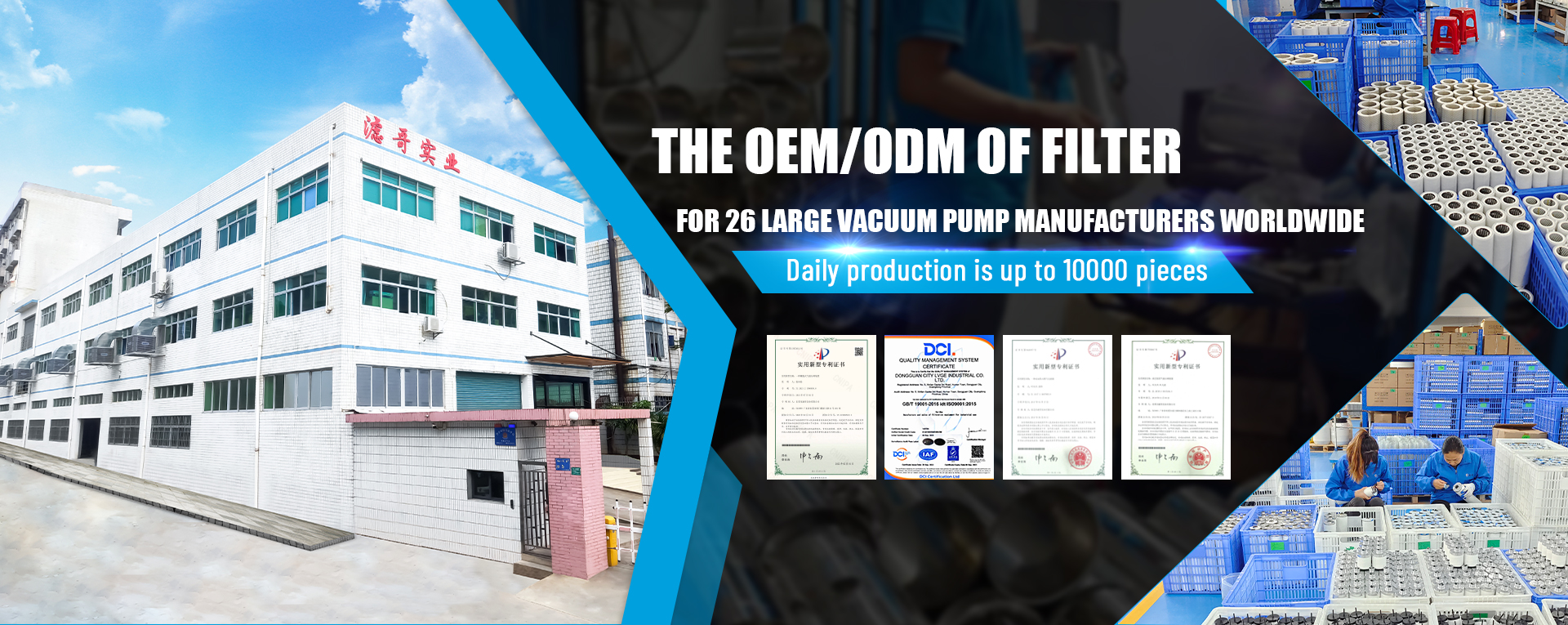Working principle of vacuum pump oil mist filter
A vacuum pump oil mist filter is a crucial component in maintaining the efficiency and functionality of vacuum pumps. It plays an essential role in removing oil mist particles generated during the pumping process, ensuring clean air is exhausted into the environment. Understanding the working principle of the oil mist filter is essential for proper operation and maintenance.
The primary function of the oil mist filter is to capture and separate oil mist particles from the exhaust air, preventing them from being released into the atmosphere. The filter consists of various layers, including a pre-filter, a main filter, and sometimes a carbon filter.
The process of filtration begins when the exhaust air, mixed with oil mist particles, enters the filter inlet. The pre-filter is the first line of defense, capturing larger particles and preventing them from reaching the main filter. The pre-filter is usually made of a porous material or wire mesh and can be cleaned or replaced when it becomes clogged.
Once the air passes through the pre-filter, it enters the main filter where the majority of oil mist particles are captured. The main filter is typically constructed from a high-density material with a large surface area for effective filtration. The oil mist particles adhere to the filter media, while the clean air continues to pass through.
In some cases, a carbon filter may be incorporated into the filtration system. The carbon filter helps to remove odors and absorb any remaining residual oil mist particles, ensuring that the exhaust air is free from any contaminants.
The working principle is based on various physical mechanisms. The most important mechanism is coalescence, which occurs when small oil mist particles collide and combine to form larger droplets. These droplets are then captured by the filter media due to their increased size and weight.
Another principle at work is filtration through the filter media. The filter media is designed with small pores that allow clean air to pass through while capturing oil mist particles. The size of the filter pores determines the efficiency of the filtration process. Smaller pore sizes can capture finer oil mist particles but may result in a higher pressure drop and reduced airflow.
Maintaining the oil mist filter is crucial to ensure its longevity and efficiency. Regular inspection and cleaning or replacement of the pre-filter are necessary to prevent clogging and maintain proper airflow. The main filter should also be monitored and replaced according to the manufacturer's recommendations or when pressure drop exceeds the specified limit.
In conclusion, the oil mist filter is an essential component in the operation of vacuum pumps. Its working principle revolves around coalescence and filtration, capturing oil mist particles and preventing their release into the environment. Regular maintenance and replacement of the filter elements are necessary to ensure optimal performance and cleanliness of the exhaust air.
Post time: Nov-22-2023







